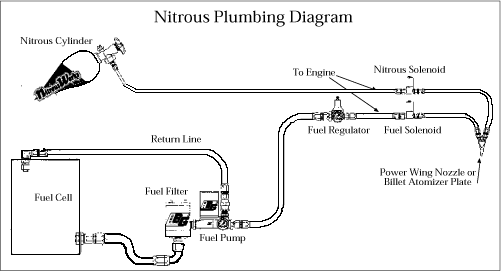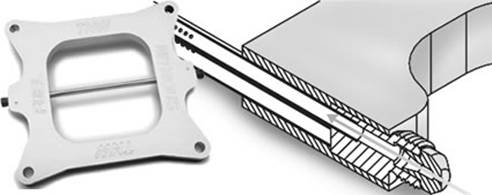





Published on Feb 14, 2025
Nitrous oxide, also known as dinitrogen oxide or dinitrogen monoxide, is a chemical compound with chemical formula N2O. Under room conditions it is a colourless non-flammable gas, with a pleasant slightly sweet odor.
It is commonly known as laughing gas due to the exhilarating effects of inhaling it, and because it can cause spontaneous laughter in some users. It is used in surgery and dentistry for its anaesthetic and analgesic effects. Nitrous oxide is present in the atmosphere where it acts as a powerful greenhouse gas.
The gas was discovered by Joseph Priestley in 1772. Humphry Davy in the 1790s tested the gas on himself and some of his friends, including the poets Samuel Taylor Coleridge and Robert Southey. They soon realised that nitrous oxide considerably dulled the sensation of pain, even if the inhaler were still semi-conscious, and so it came into use as an anaesthetic, particularly by dentists, who do not typically have access to the services of an anesthesiologist and who may benefit from a patient who can respond to verbal commands.
The structure of the nitrous oxide molecule is a linear chain of a nitrogen atom bound to a second nitrogen, which in turn is bound to an oxygen atom. It can be considered a resonance hybrid of
![]()
and
Nitrous oxide N2O should not be confused with the other nitrogen oxides such as nitric oxide NO and nitrogen dioxide NO2.Nitrous oxide can be used to produce nitrites by mixing it with boiling alkali metals, and to oxidize organic compounds at high temperatures.
![]()
The objective of nitrous oxide is to make more horsepower, which is achieved in two ways. Firstly, nitrous oxide comprises one-part oxygen and two-part nitrogen. This is a much higher percentage of oxygen than that found in the atmosphere and, because of this; the additional oxygen being forced into the combustion chamber provides more potential power. Nonetheless, the additional power cannot be realized safely without enrichening the amount of fuel in the combustion chamber. The second way nitrous oxide will increase an engine's horsepower is by cooling the air charge from the atmosphere.
One of the most important aspects of keeping an engine healthy when using nitrous oxide is to ensure it operates at the proper air/fuel ratio. Running too lean can cause detonation, resulting in damaged engine parts. Running too rich can also harm performance and destroy engine parts, too. Once calibrated, they'll inject the proper amount of fuel with the nitrous system to maintain the correct air/fuel ratio. It should be ensured that the amount of nitrous that the system is engineered to dispense does not exceed that which the intake system can flow. This prevents fuel “puddling” or distribution problems.
A further advantage of a ‘Wet’ system is that it lends itself to fine-tuning. By adjusting the fuel pressure and fuel orifice, either up or down from the baseline, the system's performance can be further improved. In addition, on a direct-port nitrous system each cylinder can be fine tuned to optimize performance and overcome rich or lean cylinders that the engine may have naturally aspirated.
The internal-combustion engine is basically a large air pump and its ability to pump air is one of the factors, which determine how much power it can produce. Air contains oxygen and by drawing more oxygen into the combustion chamber, more power will be produced. In order to achieve efficient combustion, the air needs to be mixed with fuel in the correct ratio. The stoichiometric (chemically correct) ratio is for basic gasoline is 14.7 parts air to 1 part of fuel.
A nitrous system has many benefits. There are two main types of nitrous kits: direct-port nozzle and plate kits and both feature very high quality and sound engineering.
The most advanced device in nitrous nozzle technology is power wing nozzle. With its unique wing-tip shape, it not only produces a low-pressure area on the trailing edge of the nozzle that improves atomization, it also provokes less obstruction and turbulence in the air intake tract. The internal passages have unrestricted flow yet, remarkably, remain freeze-free at all horsepower levels.
1. Straight delivery of nitrous.
2. Straight delivery of fuel.
3. The aero shape of the power wing nozzle reduces the turbulence in the intake tract, leading to better atomization of fuel and nitrous to develop more power.

The carburettor-style kits feature the Billet Atomizer TM plate which differs from other plates in two ways. One, the inlet fitting is engineered to prevent the nitrous from expanding. Expansion leads to freezing and a consequent reduction in flow. Two, the fitting is designed to eliminate turbulence of the nitrous which can also reduce the rate of flow. Obviously, any loss of flow results in a subsequent loss of power. The spray bars in the Billet Atomizer(tm) plate also feature symmetrical clusters of multiple holes - designed for improved atomization.

When comparing the costs of tuning an internal combustion engine, Nitrous oxide offers more power-per-dollar than all known alternatives. It has appreciably more than a turbocharger or blower and superior to a new set of cylinder heads or a different camshaft.
Another great advantage of installing nitrous oxide is its ability to provide instant power when it’s needed. Negotiating a high-horsepower engine through city traffic is usually not regarded as the most pleasant motoring experience.
Tuning with nitrous also provides the potential to increase power levels. By purchasing an adjustable kit, more power can be added, assuming the vehicle’s engine, transmission and driveline are up to the task. Its simply a matter of changing jets.
Installing a nitrous system is reasonably straight forward, when compared to other horsepower improving modifications. And, unlike cylinder heads and cams etc., the system can always be transferred from vehicle to vehicle.
Nitrous oxide system can be easily replaced.
| Are you interested in this topic.Then mail to us immediately to get the full report.
email :- contactv2@gmail.com |